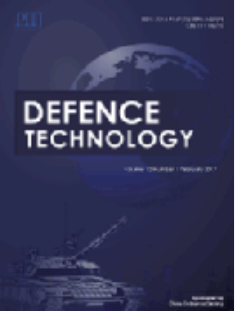基于目标磁场设计并实现具有最小孔隙的高性能微型化多层磁屏蔽球壳
IF 5.9
Q1 ENGINEERING, MULTIDISCIPLINARY
引用次数: 0
摘要
在原子磁强计(ACMs)中实现自旋交换无弛豫(SERF)状态需要稳定的弱磁环境。为了满足这些要求,本文设计了一种具有最小孔径的小型化坡莫合金磁屏蔽球壳(MSSS)。通过结合分析解决方案和有限元分析(FEA),我们实现了卓越的磁屏蔽,同时保持了紧凑的外形因素。屏蔽系数的解析解表明,有必要采用优化气隙的四层坡莫合金球壳。利用COMSOL软件建立了MSSS的数值分析模型,并对其进行了验证,确认了气隙的适用性。穿孔球壳开口的大小、形状和方向经过精心设计和优化,以最大限度地减少剩磁。制作了最优结构,三轴屏蔽系数分别为47619、52631和21739,满足预期要求。仿真结果与实验结果的对比验证了设计方法的有效性。本研究对需要弱磁场环境的超灵敏磁场探测设备,如原子陀螺仪、磁力计、原子干涉仪、原子钟等具有重要意义。本文章由计算机程序翻译,如有差异,请以英文原文为准。
Design and implementation of a high-performance miniaturized multi-layer magnetic shielding spherical shell with minimal pores based on target magnetic field
Achieving the spin-exchange relaxation-free (SERF) state in atomic comagnetometers (ACMs) necessitates a stable and weak magnetic environment. This paper presents the design of a miniaturized permalloy magnetic shielding spherical shell (MSSS) with minimal apertures, tailored to meet these requirements. By employing a combination of analytical solutions and finite element analysis (FEA), we achieved superior magnetic shielding while maintaining a compact form factor. The analytical solution for the shielding factor indicated that a four-layer permalloy sphere shell with optimized air gaps was necessary. A numerical analysis model of the MSSS was developed and validated using COMSOL software, confirming the suitability of the air gaps. The size, shape, and orientation of the openings in the perforated sphere shell were meticulously designed and optimized to minimize residual magnetism. The optimal structure was fabricated, resulting in triaxial shielding factors of 47619, 52631, and 21739, meeting the anticipated requirements. A comparison of simulation results with experimental tests demonstrated the efficacy of the design methodology. This study has significant implications for ultra-sensitive magnetic field detection devices requiring weak magnetic field environments, such as atomic gyroscopes, magnetometers, atomic interferometers, and atomic clocks.
求助全文
通过发布文献求助,成功后即可免费获取论文全文。
去求助
来源期刊

Defence Technology(防务技术)
Mechanical Engineering, Control and Systems Engineering, Industrial and Manufacturing Engineering
CiteScore
8.70
自引率
0.00%
发文量
728
审稿时长
25 days
期刊介绍:
Defence Technology, a peer reviewed journal, is published monthly and aims to become the best international academic exchange platform for the research related to defence technology. It publishes original research papers having direct bearing on defence, with a balanced coverage on analytical, experimental, numerical simulation and applied investigations. It covers various disciplines of science, technology and engineering.
 求助内容:
求助内容: 应助结果提醒方式:
应助结果提醒方式:


